Parque Jingshan - Bilhetes, horário de abertura, destaques e dicas
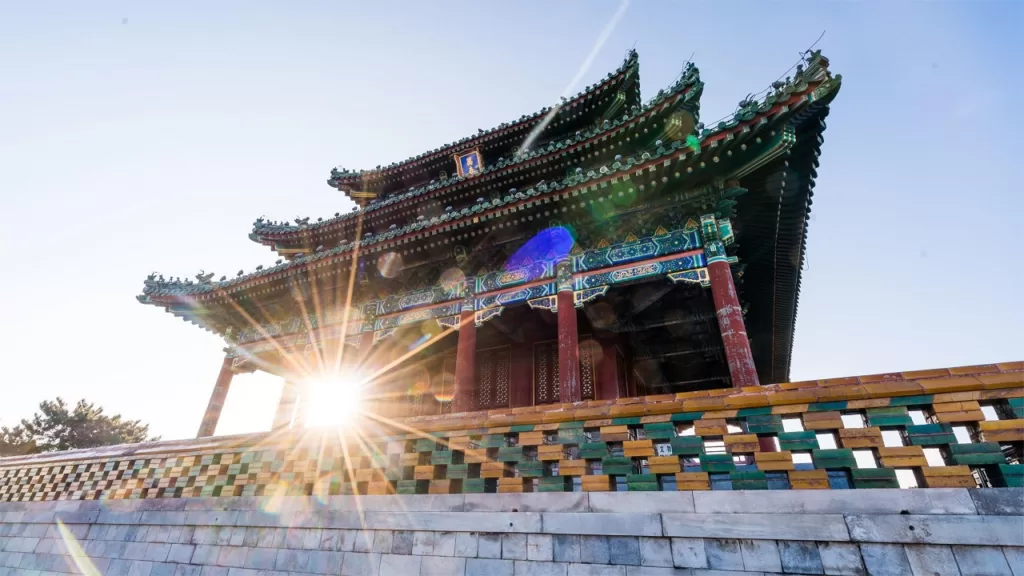
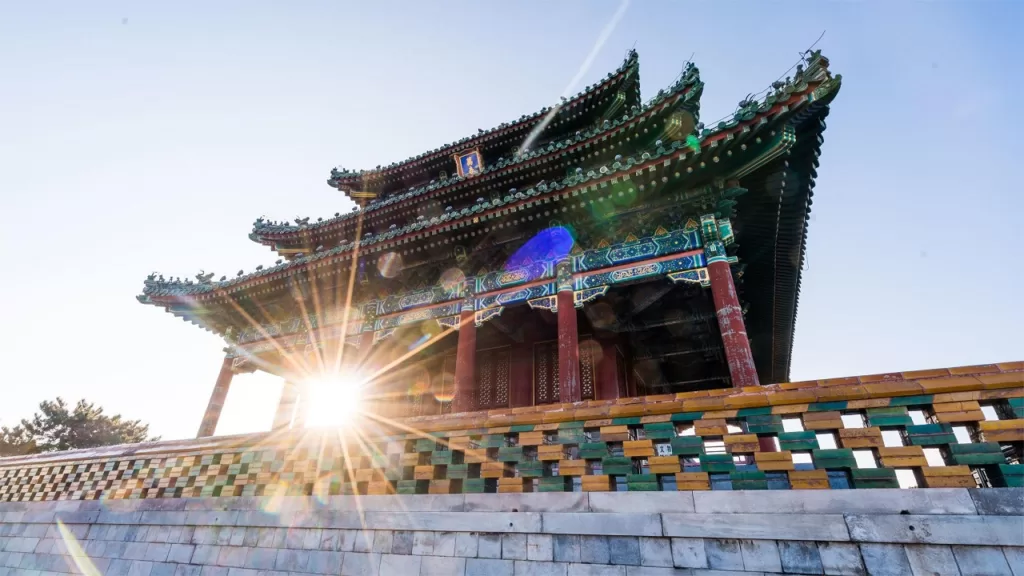
Jingshan Park (景山公园), also known as Jingshan Hill or Coal Hill, is a beautiful park located in the heart of Beijing, China. It covers an area of 23 hectares and is situated just north of the famous Forbidden City.
The park was originally created in the 13th century during the Yuan Dynasty, and was used as an imperial garden during the Ming and Qing dynasties. Today, it is a popular tourist destination and a peaceful oasis in the midst of the bustling city.
One of the park’s main attractions is its hill, which offers stunning panoramic views of Beijing’s cityscape, including the Forbidden City and the modern skyline. Visitors can climb to the top of the hill via a series of staircases, and enjoy the beautiful scenery along the way.
Jingshan Park is also home to several beautiful pavilions, gardens, and lakes, as well as a number of historic sites and cultural relics. For example, visitors can explore the Wanchun Pavilion, which was built during the Ming Dynasty, or visit the Palace of Great Benevolence, which was once used as an imperial library.
In addition to its natural beauty and historic significance, Jingshan Park is also a popular destination for locals who come to practice tai chi, play traditional Chinese instruments, or simply relax and enjoy the peaceful surroundings.
Índice
- Informações básicas
- Localização e transporte
- Highlights of Jingshan Park
- Vlog about Jingshan Park
- Dicas úteis resumidas a partir de comentários
- Interesting Facts about Jingshan Park
- Attractions near Jingshan Park
- Other Imperial Places in Beijing
Informações básicas
| Sítio Web | http://www.bjjspark.com/index.jhtml |
| Duração estimada da excursão | 1 - 3 horas |
| Preço do bilhete | Adult: 2 RMB Adolescents between 6 and 18 years old: 1 RMB Children under 1.2 meters or below 6 years old: free |
| Horário de funcionamento | 6.00 – 21.00; Last entry: 20.30 (1st April – 31st October) 6.30 – 20.00; Last entry: 19.30 (1st November – 31st March the next year) |
| Telephone number | 0086-010-64038098 (8.30 – 17.00) 0086-010-64038090 (17.00 – 8.30 the next day) |
Localização e transporte
Jingshan Park is located in the heart of Beijing, China, just north of the famous Forbidden City. Its specific address is No. 44 Jingshan West Street, Xicheng District, Beijing, China. The park is easily accessible by public transportation, with several bus stops and subway stations located nearby.
Autocarro:
- To the East Gate: Take bus No. 58, 111, or 124, get off at Jingshan Dongmen Stop, and walk about 100 meters to the north to reach the entrance
- To the South Gate: Take bus No. 58, 101, 103, 109, 124, 128, tourist line 1, 2, or 3, get off at Shenwumen Stop, and walk about 50 meters to reach the entrance.
- To the West Gate: Take bus No. 5, 58, or tourist line 3, get off at Xibanqiao Stop, and walk about 20 meters to the north to reach the entrance.
Metro:
- Take subway line 8, get off at Shichahai station, and walk about 4 kilometers to the south to reach the north gate of Jingshan Park
- Take subway line 6, get off at Beihaibei Station, walk about 2 kilometers to the east, and then another 2 kilometers to the south to reach the north gate of Jinshan Park.
Auto-condução:
- Although there is a car park to the northwest corner of the park, the space is pretty limited. So we recommend you take public transport rather than drive yourself.
Highlights of Jingshan Park
Panoramic Views of Beijing
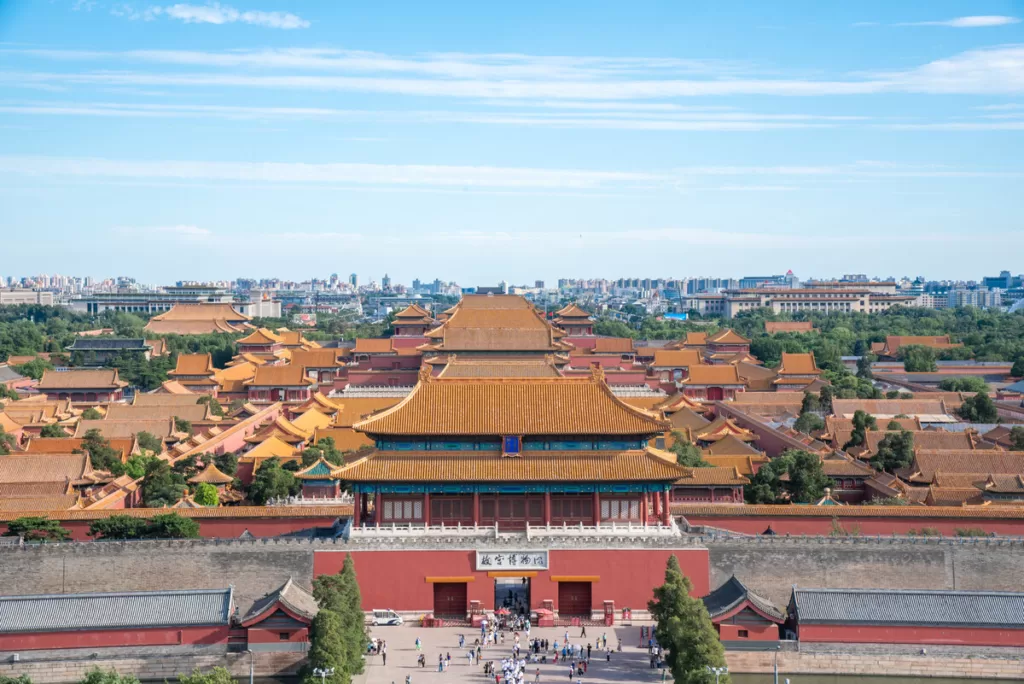
Jingshan Park’s hill, the highest point in the central Beijing area, offers some of the best panoramic views of the city’s layout and architecture. From the top, visitors can see the magnificent Forbidden City in all its glory, as well as the surrounding modern skyline. The view extends as far as the mountains to the north of the city on a clear day. It is particularly breathtaking at sunset when the sky is painted with shades of pink and orange.
Historic Sites
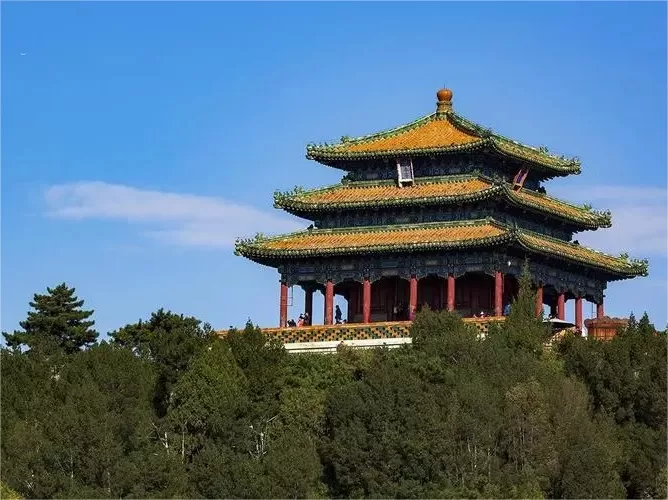
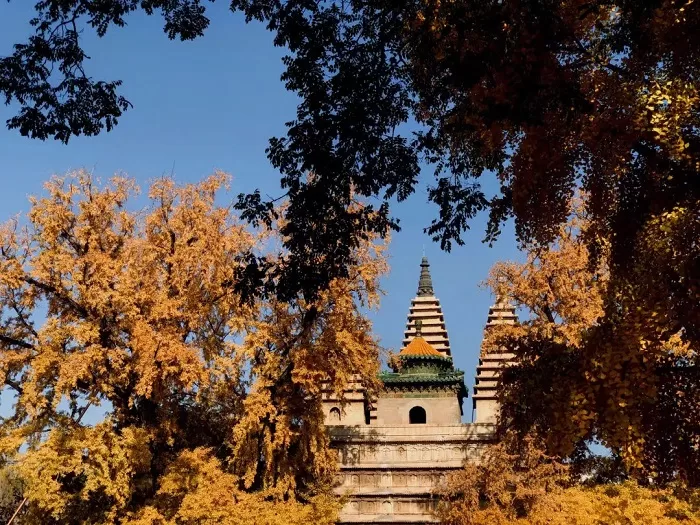
There are several historic sites in the park, including:
- Wanchun Pavilion: This pavilion was built during the Ming Dynasty and was used as a place for emperors to relax and enjoy the beautiful scenery.
- Palace of Great Benevolence: This building was once used as an imperial library and is one of the oldest structures in the park. It features beautiful architecture and intricate decorations and is a must-see for history buffs.
- Zhenjue Temple: This temple was built during the Yuan Dynasty and is dedicated to the Buddhist goddess Guanyin. It’s a peaceful and serene spot within the park, perfect for meditation and contemplation.
- Nine-Dragon Cypress: This ancient cypress tree is over 500 years old and is considered a cultural relic. It’s a popular spot for visitors to take photos and appreciate the natural beauty of the park.
Jardins bonitos

The gardens in Jingshan Park exhibit various styles of traditional Chinese design, which are characterized by their attention to detail, use of natural materials, and focus on creating a harmonious balance between man-made structures and the natural environment.
They are characterized by their use of pavilions, rock formations, and water features to showcase the wealth and power of the imperial family or pursue simplicity and focus on creating a peaceful and meditative environment.
Local Life
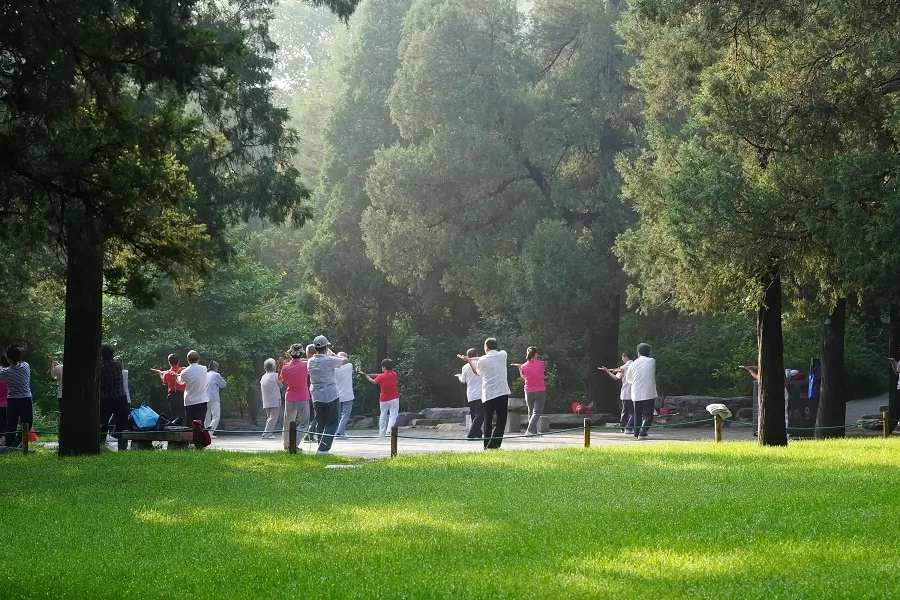
Jingshan Park is a great place for foreigners to learn about the normal life of local residents. The park offers a variety of cultural activities, such as traditional music performances and calligraphy exhibitions, that provide insight into daily lives and traditions. Moreover, Observing the daily routines of locals, including morning exercises and socializing, can also give foreigners a better understanding of their lifestyle and customs.
Cherry Blossom

Jingshan Park is a beautiful place to visit during the cherry blossom season, which typically occurs from late March to early April. During this time, the park is transformed into a sea of pink and white as the cherry blossom trees bloom. The park is home to hundreds of cherry blossom trees, and visitors can enjoy a leisurely stroll through the park while admiring the stunning scenery. The fragrance of the blossoms fills the air, creating a peaceful and calming atmosphere.
Vlog about Jingshan Park
Dicas úteis resumidas a partir de comentários
Arrive Before 4:30 PM for Sunset: It’s recommended to arrive at Jingshan Park, specifically at the Wanchun Pavilion, before 4:30 PM. This timing allows you to witness the sunset slowly engulfing the mountains, casting a beautiful orange hue over the Forbidden City.
Convenient Transportation: You can reach the Temple of Heaven easily by taking bus route 60 from the East Gate,in one direction and to the Drum Tower in the opposite direction. From the West Gate of Jingshan Park, it’s a short 5-minute walk to the East Gate of Beihai Park. Similarly, from the South Gate, it’s around a 5-minute walk to Shenwumen Gate of the Forbidden City.
Be Mindful of Darkness: While Jingshan Park officially closes at 9:00 PM, it’s worth noting that after 7:00 PM, it can get quite dark. The paths might not be well-lit, especially after entering from the East Gate. It’s essential to proceed with caution, as visibility may be limited, particularly when climbing to the top of the hill.
Interesting Facts about Jingshan Park
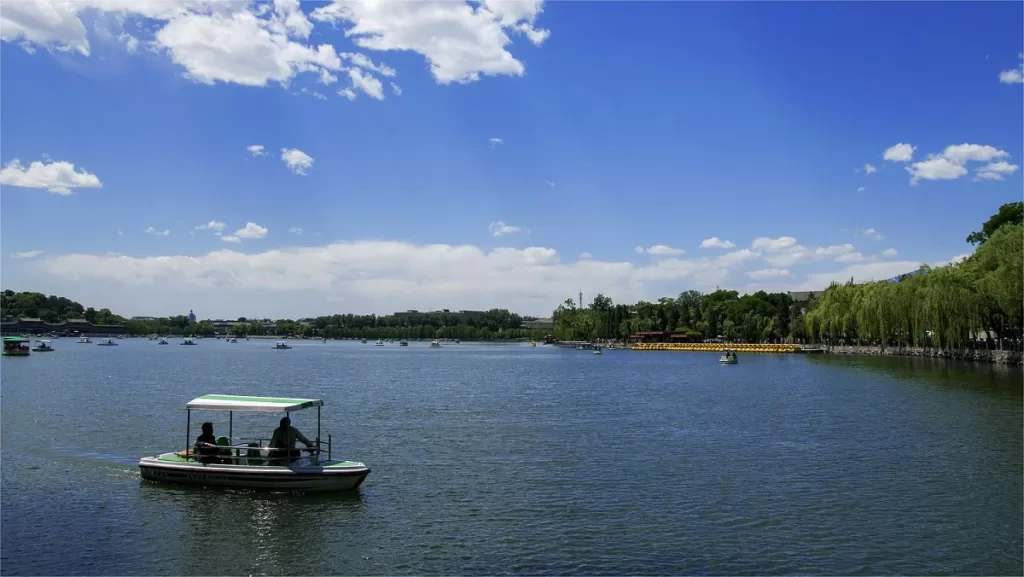
Beihai park vs Jingshan park – What is the difference

Why is Jingshan Park called Coal Hill?
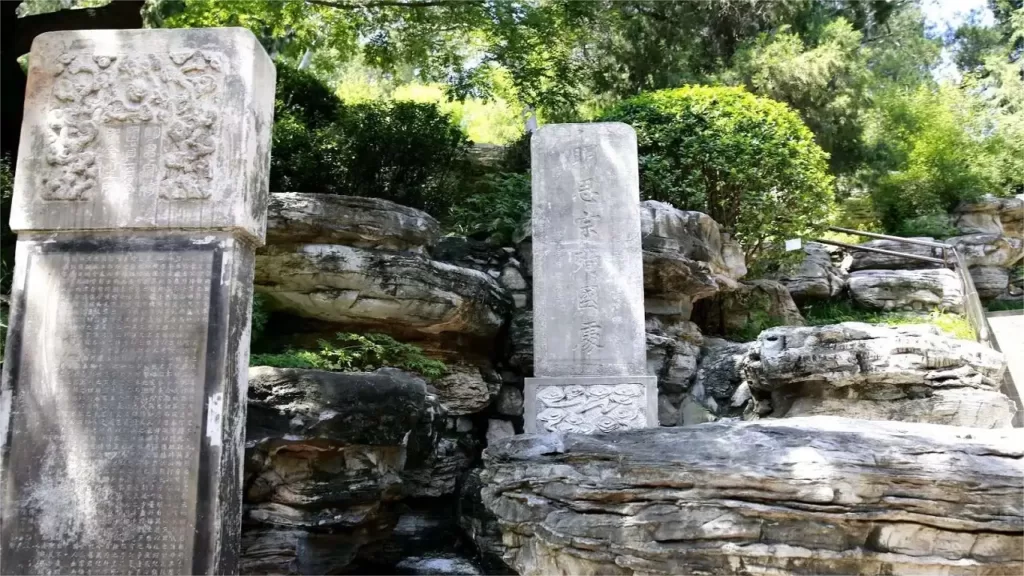
Jingshan park and Emperor Chongzhen
Attractions near Jingshan Park
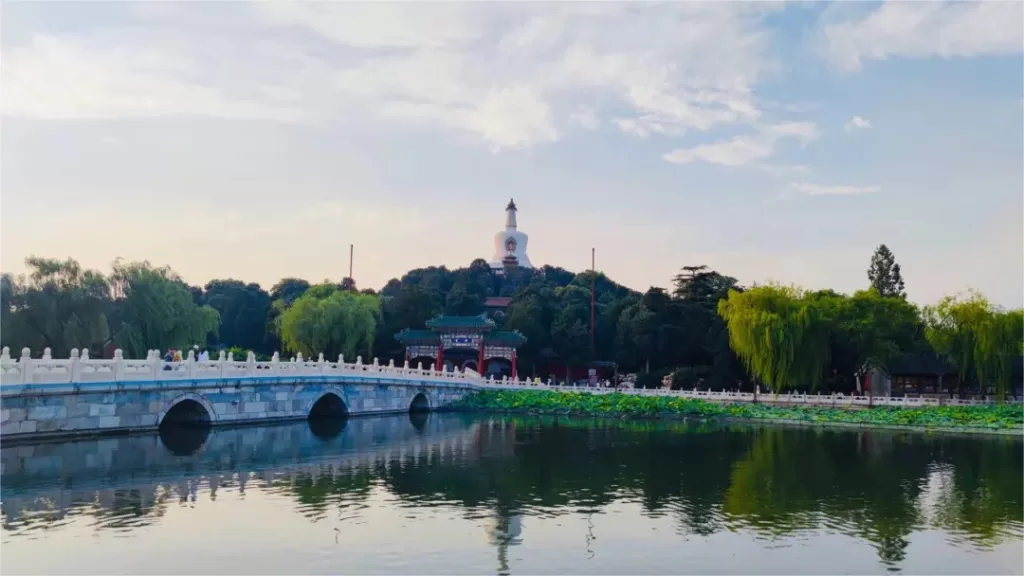
Parque Beihai - um dos parques imperiais mais bem preservados

Cidade Proibida - antiga residência dos imperadores

Shichahai - três lagos interligados - Qianhai, Houhai e Xihai

Houhai Bar Street - um destino popular de vida nocturna
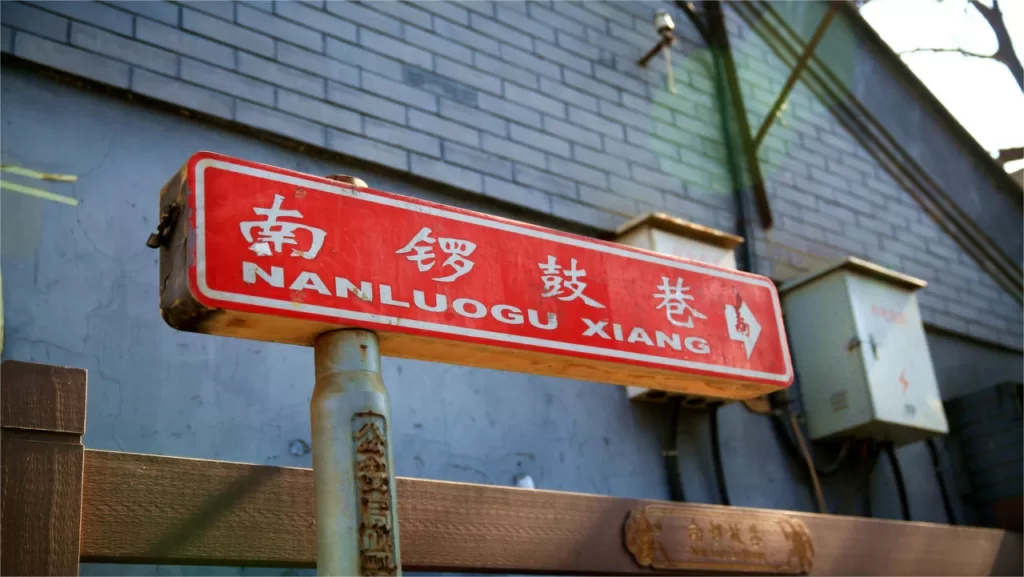
Nanluoguoxiang - uma representação dos hutongs de Pequim
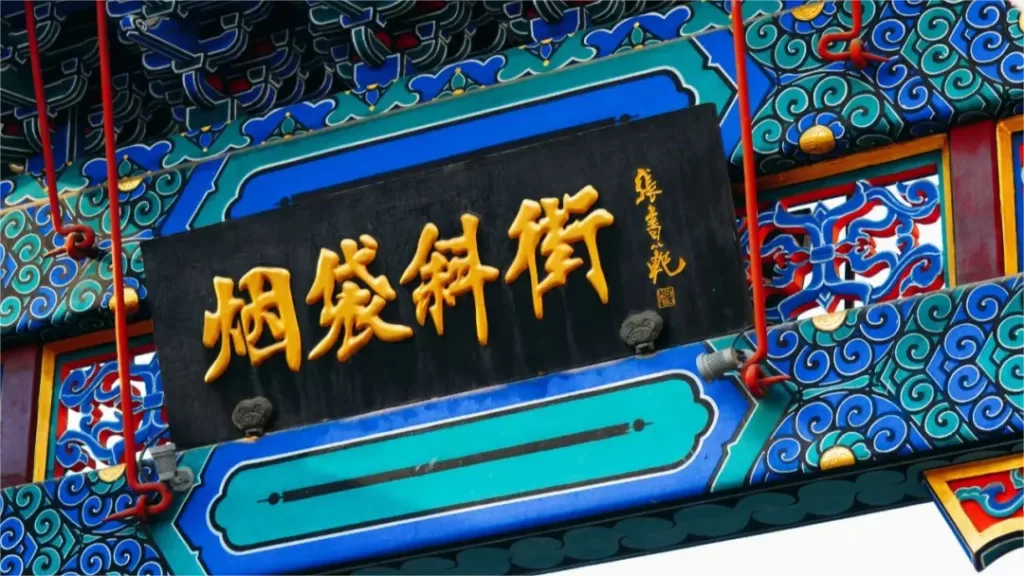
Yandaixie Street – a well-known pedestrian street
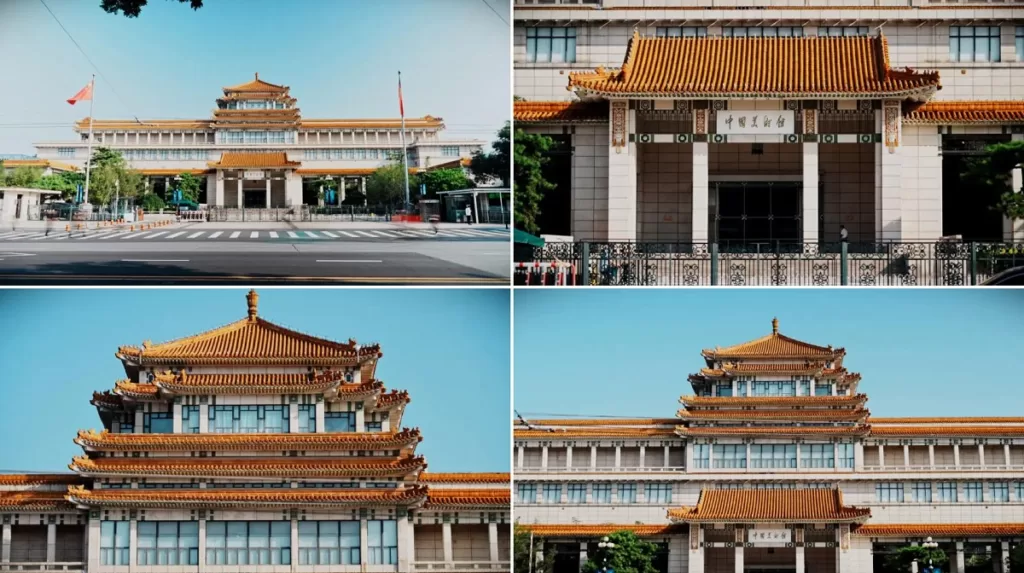
Museu Nacional de Arte da China - o principal museu de arte da China
Other Imperial Places in Beijing

Summer Palace – the imperial resort
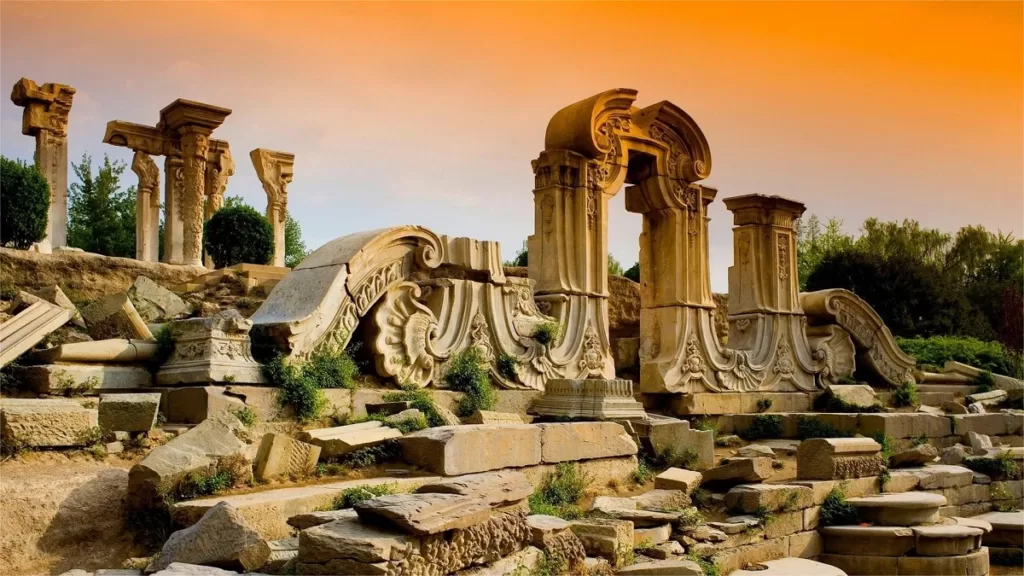
Yuanmingyuan – ruins of former palaces
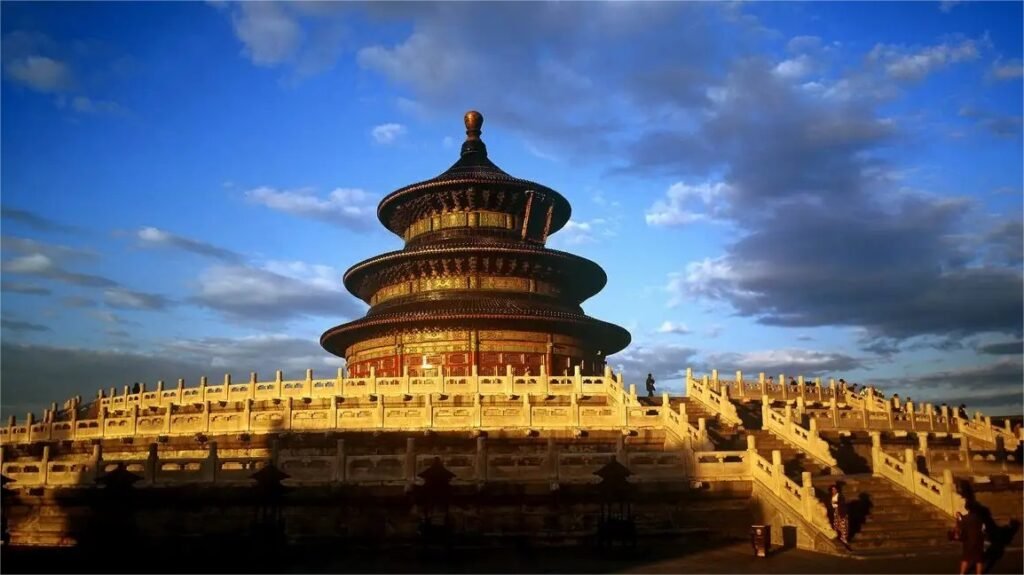
Templo do Céu - o local onde se realizam as cerimónias de sacrifício